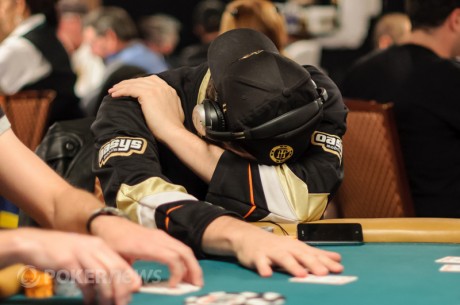The Poker Shrink, Vol 42 -- The Pareto Principle and the Ninety-Ninety Rule

There is a somewhat humorous but all too true rule in business often called the 'Ninety-Ninety Rule.' There are literally hundreds of variations of the Ninety-Ninety Rule in business and other creative endeavors. In computer programming, for example, its version of the Ninety-Ninety Rule goes something like this:
"The first 90% of the code accounts for the first 90% of the development time. The remaining 10% of the code accounts for the other 90% of the development time."
That the total development time sums to 180% is a humorous observation of the tendency of engineering, budget planning, product development, construction projects or nearly any human endeavor to overrun its original schedule. We all know this and yet we all make schedules. Of course, there must be another rule somewhere that says: "If you don't make a schedule to eventually be overrun, then the project will take even longer."
The Ninety-Ninety Rule is a variation of the Pareto principle. The Pareto principle (also known as the 80/20 rule) states that, for many phenomena, 80% of the consequences stem from 20% of the causes. Italian economist Vilfredo Pareto originally observed that 80% of income in Italy went to 20% of the population. It is a common rule of thumb in business; e.g., "80% of your sales come from 20% of your clients." (Wikipedia definition)
So let's apply the Pareto Principle to poker. Depending upon the limits you play the numbers might be 80/20 or even 90/10, as the Ninety-Ninety Rule might indicate. My observation is that the lower the limits, the higher the ratio; the Ninety-Ninety Rule might be more appropriate at $4/$8 but the Pareto Principle (80/20) would be more applicable at $20/$40 and above. Here are the two variations I have come up with for poker.
Pareto Poker Principle #1: 80% of your wins comes from 20% of your opponents.
Pareto Poker Principle #2: 80% of your profit comes from 20% of your plays.
Principle #1 is perhaps the easier of the two. Most good poker players know that other good poker players will not enter a big pot without some kind of a hand; they will not chase a pot for all their chips and they can make the big lay-down. On the other hand, the weakest players at the table will do exactly the opposite of this, whether they are chasers or over-aggressive maniacs. Targeting those players and opening up your game when they are in the pot with you is a profit-making strategy, just as playing more conservatively against the other good players is a good loss-reduction move.
Over time, the majority of your profits will come from your opponent's mistakes. Therefore, it makes profitable sense to play more hands against the poor poker players than against the better ones. You will find over time that the majority of your profits come from that small percentage of truly poor poker players.
Principle #2 is a bit trickier because it has two parts. First, you will be making plays at the table: check-raising; stop-'n'-gos; semi-bluffs; all the tricks in your bag. To make these plays profitable, you need to be able to recognize when they have gone wrong and to let them go before the big bets hit on the turn and river. All this is the first part.
The second part, which is perhaps a more advanced play, is that many really good moves at the poker table need a set-up. You need to make the first bet and fold to the reraise a few times to set the player up for the big kill. Or you need to not defend your blinds, in order to pounce when the blind stealer gets too greedy. So, you are using moves and plays that you know will lose you small amounts of chips, in order to set up the big score.
It's an interesting rule of thumb that you might expect only 1 in 5 moves to be profitable (80/20 principle again) but it surely is more profitable then the player who plays every move to the bitter and costly end.
Consider your own game. Do you have an 80/20 rule in place? Are you ready for 90/10? Notice that the higher the ratio, the more disciplined you need to be. If you're making 90% of your profit from 10% of your moves and only 10% of the other players, then you are playing twice as tight as the 80/20 player.
What is your Pareto Poker Principle number?








